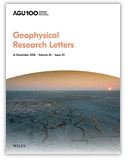Summary
Mountains are natural water towers that store snowpack in winter and release it as snowmelt during spring to summer. However, climate change has and continues to undermine this natural service. To answer where and when water resource management may be impacted by a future of low to no snowpack, we can leverage climate models, which are able to project the future conditions of mountain snowpack under various assumptions of global greenhouse gas emissions. In this study, we use five unique climate models under a high emissions scenario to evaluate a set of snowpack measures upstream of 10 California reservoirs. These 10 reservoirs represent nearly half of California’s surface storage and by end century could face a 79 percent reduction in peak snowpack water volume. This work provides detailed guidance on the mountain snow conditions policymakers, water managers, and scientists will encounter in addressing adaptive resiliency in the face of climate change.


